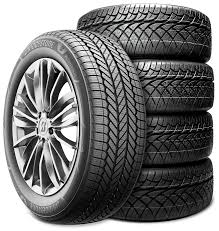When it comes to natural hair, few textures are as fascinating, beautiful, and unique as 4B hair. It’s bold, full of personality, and has a distinct charm that deserves to be celebrated. But caring for it can sometimes feel like solving a puzzle, right? If you’ve ever struggled to define your curls or keep your hair moisturized, you’re not alone. In this guide, we’ll explore everything you need to know about 4B hair—what makes it special, how to care for it, and the best practices to keep your curls thriving.
Understanding 4B Hair Texture
What Is 4B Hair?
4B hair belongs to the Type 4 hair family, which is known for tight curls and coils. Specifically, 4B hair has a “Z-shaped” curl pattern, meaning it bends sharply instead of forming a clear spiral. This texture often looks fluffy, dense, and soft but can appear shorter due to shrinkage—sometimes up to 70–80% of its actual length.
How 4B Hair Differs From 4A and 4C
If 4A hair has defined ringlets and 4C has tighter, almost invisible curls, then 4B sits perfectly in between. It’s less defined than 4A but not as tightly coiled as 4C. Think of it as the “middle child” of Type 4 hair—flexible, adaptable, and uniquely stunning.
The Beauty and Challenges of 4B Hair
Why 4B Hair Is Beautiful
4B hair stands out because of its versatility. It can hold styles beautifully—from twist-outs to afro puffs—and has an incredible ability to maintain volume. Its soft texture gives it a cloud-like look that’s impossible to ignore.
Common Struggles
Despite its beauty, maintaining 4B hair can be challenging. Dryness, tangles, and breakage are common issues since the tight bends make it harder for natural oils to travel down the strands. But with proper care, your 4B curls can flourish like never before.
How to Identify 4B Hair
The Pencil Test
Try wrapping a strand of your hair around a pencil. If the curl forms a sharp angle instead of a smooth coil, it’s likely 4B.
The Touch Test
4B hair often feels soft and cottony. It may also appear fluffy rather than shiny, which is completely natural for this texture.
Moisture: The Secret to Healthy 4B Hair
Why Moisture Matters
4B hair craves moisture more than almost any other type. Because of its tight curls, it’s prone to dryness, which can lead to breakage. Think of your curls like a sponge—they thrive when hydrated but can become brittle when dry.
Best Moisturizing Techniques
The LOC method—Leave-in conditioner, Oil, and Cream—works wonders for 4B hair. It helps seal in moisture and prevents it from evaporating too quickly. Some prefer the LCO method, which reverses the last two steps. The key is consistency: moisturizing your hair regularly keeps it soft and manageable.
Cleansing 4B Hair the Right Way
How Often Should You Wash 4B Hair?
Since 4B hair is prone to dryness, washing it too often can strip away its natural oils. Once every 7–10 days is usually ideal.
Choose Gentle Cleansers
Opt for sulfate-free shampoos or cleansing conditioners (co-washes). These products clean your hair without leaving it feeling stripped or crunchy.
Detangling Without Damage
The Best Time to Detangle
Detangle when your hair is damp and coated with conditioner. This minimizes breakage and helps your fingers glide through the curls.
Tools and Techniques
-
Use a wide-tooth comb or fingers instead of fine combs.
-
Start detangling from the ends and work your way up.
-
Be patient—4B hair rewards gentle care.
Styling 4B Hair
Protective Styles
Protective styles like twists, braids, bantu knots, and cornrows help retain moisture and reduce daily manipulation. They also protect your ends from damage.
Wash-and-Go or Twist-Out?
While wash-and-go styles may not define 4B curls as easily, twist-outs and braid-outs give the hair structure and definition. These styles also stretch the hair slightly, reducing tangles and shrinkage.
Shrinkage: Friend or Foe?
Shrinkage often gets a bad rap, but it’s actually a sign of healthy hair. It means your curls have good elasticity. Still, if you prefer a stretched look, try gentle methods like banding, African threading, or twist-outs instead of heat.
The Best Products for 4B Hair
Must-Have Essentials
-
Moisturizing shampoos and conditioners
-
Leave-in conditioner
-
Natural oils like coconut, olive, or jojoba
-
Curl creams and butters for styling
DIY Options
Homemade masks with avocado, honey, or aloe vera can be just as effective. Natural ingredients provide deep hydration without harsh chemicals.
Nighttime Hair Care Routine
Protect While You Sleep
Cotton pillowcases absorb moisture. Switch to a satin or silk bonnet, scarf, or pillowcase to reduce friction and keep your curls hydrated overnight.
Re-moisturize Lightly
Before bed, apply a light leave-in spray or oil mist to keep your hair soft until morning.
Common Mistakes to Avoid
-
Skipping Deep Conditioning: Deep conditioning once a week restores moisture and elasticity.
-
Using Too Much Heat: Heat can damage the curl pattern. Limit blow-drying and straightening.
-
Neglecting the Scalp: A healthy scalp equals healthy hair. Massage it regularly with natural oils.
Building Confidence with 4B Hair
4B hair isn’t just a texture—it’s a statement. It represents strength, individuality, and natural beauty. Embracing your curls is about more than hair care—it’s self-love. Whether you wear it in a big afro, a sleek bun, or twists, your 4B hair tells your story in every coil.
Conclusion
Caring for 4B hair is a journey of patience, discovery, and pride. With the right routine—moisture, protection, and gentle handling—you can unlock your hair’s full potential. Remember, your curls are not difficult; they’re simply unique, and they deserve to be treated with care and love.




